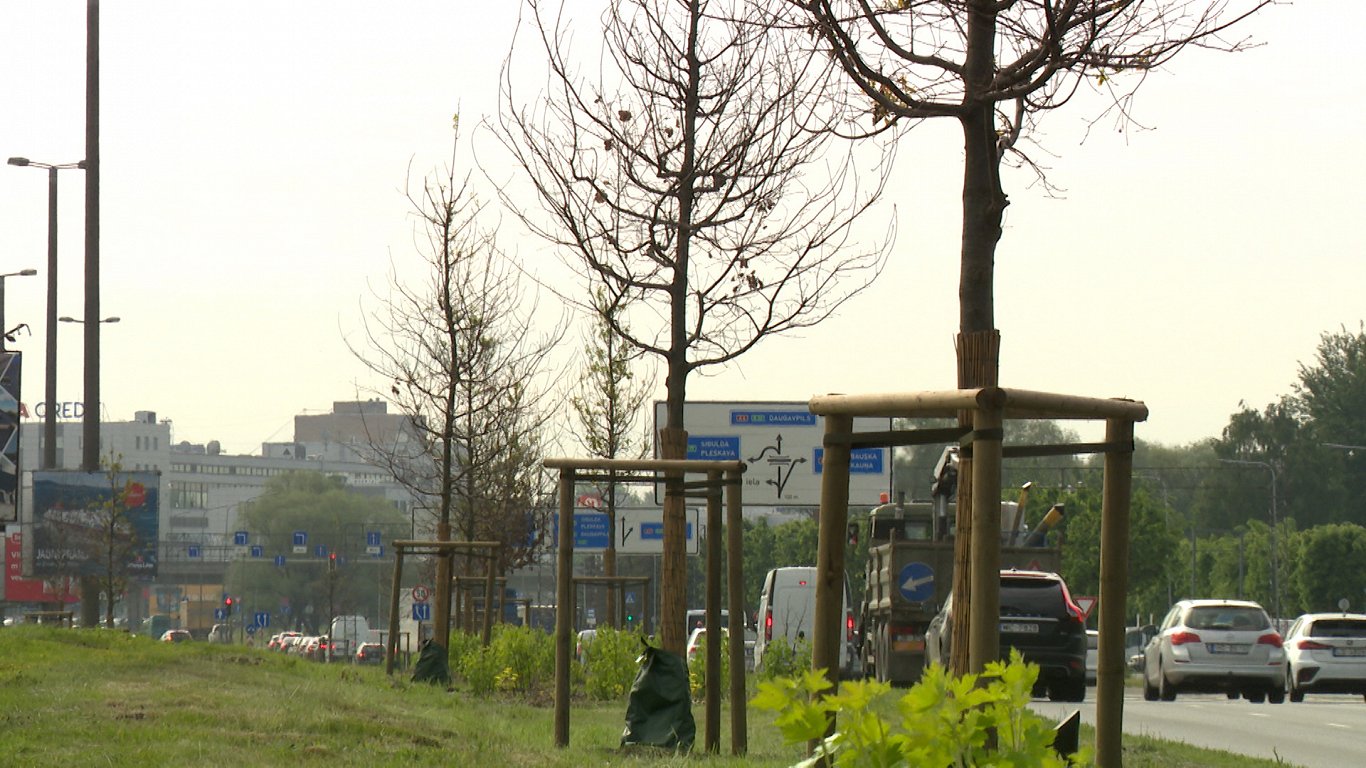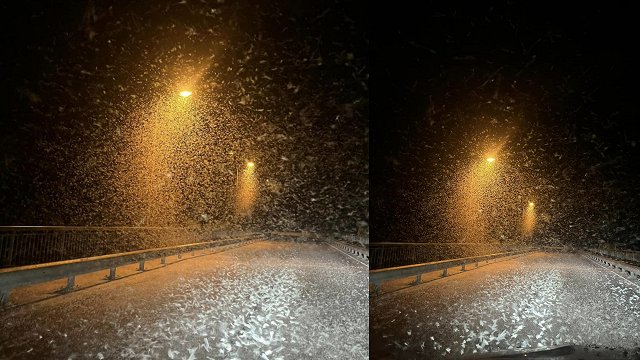“Yes, salt is what hurts trees the most. And in the case of Krasta Street, analyzing both the speed of traffic and the cold winter — a lot of snow, a lot of salt that picked up in a big cloud, respectively. It then landed on these trees in the form of an aerosol. The tops of the oaks are green. This means that the aerosol has not hit so much, but the lower branches are all salty,“ said Jānis Lediņš, spokesman for Rīga Forests.
Two trees from the same batch planted along Krasta Street are growing in the center of Rīga, Kronvalda park. There trees are green.“Because green and salty are not really compatible,” said Lediņš.
“Probably birches were not the most successful choice that could be planted here. It would have been safer with the oaks, probably even safer, for example, Swedish rowan - species that are relatively salt tolerant,” said Andrejs Svilāns, Director-General of the Nature Conservation Agency.
In expert assessment, the birch branches are completely dead. “This corpse will not be helped by a band. But what we see on the trunk is green coming from fatter shoots. So we're looking forward to this summer and looking at what's going to happen next spring,” Svilāns said.
In Riga, streets are strewn with salt in winter, and Krasta Street is in a windy place. Was it not taken into account when planting trees? “That all we knew and understood, of course, but the job from the council was given, from the Department of Housing and Environment. And we implemented it as much as we could in good faith,” Lediņš said.
Inguna Kublicka, head of the Department of Housing and Environment, explained that the situation and risks were certainly investigated. And trees and bushes were planted on Krasta Street according to an improvement project developed by landscape architects.
Total investment in plants amounted to €293,264. The cost consisted of 120 tree and 2433 bush plants, as well as planting. So nearly €300 thousand was invested in the plants half a year ago, but the trees are partly dead.
What's going to happen next? “We have called for an expert, Gvido Leiburgs. He has given us recommendations on how to better act. In line with these recommendations, we will carry out soil tests, examine what soil composition is, so that we can enrich these trees and shrubs more optimally. But one of the first measures that will be taken quite immediately will be the removal of tree wreaths, which means reduction,” explained Kublicka.
Gvido Leiburgs believes the situation isn't as dramatic. He explained, if the trees had been planted in the spring, they could have grown in the summer and survived the “salted” winter much better.
“None of the trees at the given moment has 100% lost growth capacity. This is the conclusion that has been drawn from a detailed assessment of the condition of all trees. Care recommendations have also been prepared. Let us try to make every effort to improve their situation,“ said the arborist Gvido Leiburgs.
Salt used as a slipping-prevention agent has been subject to citizens' dissatisfaction year after year, yet not much has changed in the use of it. Last year, Mayor Mārtiņš Staķis said work would be carried out to try to keep Rīga as sodium-free as possible.




























